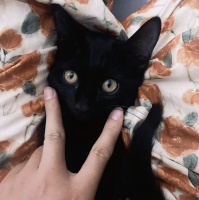Java零基础系列教程013Java多态
配套视频教程
本文B站配套视频教程
问题
宠物饿了,需要主人给宠物喂食
不同宠物吃的东西不一样,狗吃骨头,企鹅吃鱼
不同宠物恢复后体力值不一样
狗狗类
增加狗狗吃食的方法
企鹅类
增加企鹅吃食的方法
创建主人类
编写给狗狗喂食的方法
编写给企鹅喂食的方法
编写测试方法
调用主人类给狗狗喂的方法
调用主人类给企鹅喂的方法
宠物父类
public abstract class Pet {private String name = "无名氏";// 昵称private int health = 100;// 健康值private int love = 0;// 亲密度/** * 抽象方法eat(),负责宠物吃饭功能。 */public abstract void eat();/** * 有参构造方法。 * @param name 昵称 */public Pet(){}public Pet(String name) {this.name = name;}public void setName(String name) {this.name = name;}public void setHealth(int health) {this.health = health;}public void setLove(int love) {this.love = love;}public String getName() {return name;}public int getHealth() {return health;}public int getLove() {return love;}/** * 输出宠物信息。 */public void print() {System.out.println("宠物的自白:n我的名字叫" + this.name +",健康值是"+ this.health + ",和主人的亲密度是"+ this.love + "。");} }
狗类
public class Dog extends Pet {private String strain;// 品种/** * 有参构造方法。 * @param name 昵称 * @param strain 品种 */public Dog(String name, String strain) {super(name);this.strain = strain;}public String getStrain() {return strain;}/** * 重写父类的print方法。 */public void print(){super.print(); //调用父类的print方法System.out.println("我是一只 " + this.strain + "。");}/** * 实现吃食方法。 */public void eat() {if(getHealth()>=100){System.out.println("狗狗"+this.getName() +"吃饱了,不需要喂食了!");}else{this.setHealth(this.getHealth()+3);System.out.println("狗狗"+this.getName() + "吃饱啦!健康值增加3。");}} }
企鹅类
public class Penguin extends Pet {private String sex;// 性别/** * 有参构造方法。 * @param name 昵称 * @param sex 性别 */public Penguin(String name, String sex) {super(name);this.sex = sex;}public String getSex() {return sex;}/** * 重写父类的print方法。 */public void print() {super.print();System.out.println("性别是 " + this.sex + "。");}/** * 实现吃食方法。 */public void eat() {if(getHealth()>=100){System.out.println("企鹅"+this.getName() +"吃饱了,不需要喂食了!");}else{this.setHealth(this.getHealth()+5);System.out.println("企鹅"+this.getName() + "吃饱啦!健康值增加3。");}} }
主人类
public class Master {private String name = "";// 主人名字private int money = 0; // 元宝数/** * 有参构造方法。 * @param name 主人名字 * @param money 元宝数 */public Master(String name, int money) {this.name = name;this.money = money;}public void setName(String name) {this.name = name;}public void setMoney(int money) {this.money = money;}public int getMoney() {return money;}public String getName() {return name;}/** * 主人给Dog喂食。 */public void feed(Dog dog) {dog.eat();}/** * 主人给Penguin喂食。 */public void feed(Penguin pgn) {pgn.eat();} }
测试类
public class Test {public static void main(String[] args) {Dog dog = new Dog("欧欧", "雪娜瑞");dog.setHealth(80); //设置健康值,以便正常喂食Penguin pgn = new Penguin("楠楠", "Q妹");Master master=new Master("王先生",100);master.feed(dog);//主人给狗狗喂食master.feed(pgn);//主人给企鹅喂食pgn.setHealth(80); //设置健康值,以便正常喂食master.feed(pgn);//主人再次给企鹅喂食} }
如果再领养新种类XXX的宠物,就需要给XXX喂食,怎么办?
添加XXX类,继承Pet类,实现吃食方法 修改Master类,添加给XXX喂食的方法public class Master { public void feed( Dog dog ) { dog.eat(); }public void feed( Penguin pgn ) { pgn.eat(); }public void feed( XXX xxx ) { xxx.eat(); } … … }
频繁修改代码,代码可扩展性、可维护性差,如何优化?
使用多态优化设计
参数都是Pet类的子类
可否使用一个feed(Pet pet)实现对所有宠物的喂食?
多态:同一个引用类型,使用不同的实例而执行不同操作
使用多态实现思路
编写父类 编写子类,子类重写父类方法 运行时,使用父类的类型,子类的对象Pet pet = new Dog();
使用父类作为方法形参实现多态
使用多态优化主人给宠物喂食
public class Master { //使用父类作为方法形参 public void feed( Pet pet ) { pet.eat(); } }
测试类的改变
Pet pet = new Dog(); Master master = new Master(); master.feed( pet );//同一种操作方式,不同的操作对象
练习
使用多态实现喂养宠物功能
增加宠物猫并喂食,其健康值增加4
计算一次租赁多辆汽车的总租金
在继承章节汽车租赁系统的基础上,实现计算多种车辆总租金的功能
现在有客户租用
2辆宝马
1辆别克商务舱
1辆金龙(34)座
租5天共多少租金?
解题思路
1、创建车的对象,放在数组中
MotoVehile[] motos = new MotoVehile[4]; motos[0] = new Car("宝马550i","京NY28588"); motos[1] = new Car("宝马550i","京NNN328"); motos[2] = new Car("别克林荫大道","京NY28588"); motos[3] = new Bus("金龙",34);
2 循环调用calcRent()方法,计算总租金
public int calcTotalRent(MotoVehile[] motos,int days){ int totalRent = 0; for(int i=0;i<motos.length;++i){ totalRent += motos[i].calRent(days); } return totalRent; }
假设新增了一种对外出租的车辆类型
新购置了卡车,根据吨位,租金每吨每天50
对系统进行扩展,计算汽车租赁的总租金
1.创建卡车类,实现calcRent ()方法
2.修改统计租金代码
public abstract class MotoVehicle { private String no;//车牌号 private String brand;//品牌 abstract int calRent(int days);//计算租金 public MotoVehicle() { } public MotoVehicle(String no, String brand) { this.no = no; this.brand = brand; } public String getNo() { return no; } public void setNo(String no) { this.no = no; } public String getBrand() { return brand; } public void setBrand(String brand) { this.brand = brand; } }
public class Car extends MotoVehicle{ public Car(String no, String brand) { super(no,brand); } @Override int calRent(int days) { if(getBrand().equals("宝马")) { return 500 * days; } else { return 600 * days; } } }
public class Kache extends MotoVehicle { private int dunwei;//吨位 public Kache(int dunwei) { this.dunwei = dunwei; } @Override int calRent(int days) { return 50*dunwei*days; } }
不用多态的实现方式
Car[] cars = new Car[3]; cars[0] = new Car("辽A12345","宝马"); cars[1] = new Car("辽B22222","别克"); cars[2] = new Car("辽A62222","奔驰"); Kache[] kaches = new Kache[2]; kaches[0] = new Kache(1);//150 kaches[1] = new Kache(4);//600 int total = 0; for(int i = 0; i < cars.length; i++) { total += cars[i].calRent(3); } for(int i = 0; i < kaches.length; i++) { total += kaches[i].calRent(3); } System.out.println("总租金" + total);//5850 使用多态实现
MotoVehicle[] motoVehicles = new MotoVehicle[5]; motoVehicles[0] = new Car("辽A12345","宝马"); motoVehicles[1] = new Car("辽B22222","别克"); motoVehicles[2] = new Car("辽A62222","奔驰"); motoVehicles[3] = new Kache(1); motoVehicles[4] = new Kache(4); int total = 0; for(int i = 0; i < motoVehicles.length; i++) { total += motoVehicles[i].calRent(3); } System.out.println("总租金" + total);
一个练习
工资支付系统
定义一个Employee抽象基类(name)
公司有以下几种员工:
开发人员:工资计算方式,每月固定工资
销售人员:底薪+提成
硬件工程师:生产零件,每个50元
小时工:按工作时间付工资,每小时30元
主类(测试类)
创建不同类型的6名员工对象,计算他们应付的月工资之和
public abstract class Employee { private String name; public Employee(String name) { this.name = "@" + name + "@" ; } protected abstract int paySalary(); }
//开发人员 public class Developer extends Employee{ private int salary; public Developer(String name, int salary) { super(name); this.salary = salary; } @Override//方法重写注解 protected int paySalary() { return salary; } }
//销售人员 public class SaleMan extends Employee{ private int salary; private int comm;//提成 public SaleMan(String name, int salary, int comm) { super(name); this.salary = salary; this.comm = comm; } @Override protected int paySalary() { return salary + comm; } }
//硬件工程师 public class HardwareEngineer extends Employee { private int productCount;//每月生产的零件数量 public HardwareEngineer(String name, int productCount) { super(name); this.productCount = productCount; } @Override protected int paySalary() { return 50*productCount; } }
//小时工 public class HourlyWorker extends Employee{ private int hours;//这个月工作了多少小时 public HourlyWorker(String name, int hours) { super(name); this.hours = hours; } @Override protected int paySalary() { return 30*hours; } }
public class Boss extends Employee { public Boss(String name) { super(name); } @Override protected int paySalary() { return 200000; } }
public class Main { public static void main(String[] args) {// write your code here Employee[] employees = new Employee[6]; employees[0] = new Developer("张二",5000); employees[1] = new Developer("张三",5000); employees[2] = new SaleMan("李四", 2000, 500); employees[3] = new HardwareEngineer("王五", 200); employees[4] = new HourlyWorker("冯六",200); employees[5] = new Boss("赵本山"); //计算总工资 int total = 0; for(int i = 0; i < employees.length; i++) { total += employees[i].paySalary(); } System.out.println("总共需要支付" + total); } }
相关知识
Java笔记:多态polymorphic
JAVA宠物信息管理系统开发教程【MVC+JCF+IO流】
java 多态
多态
零基础宠物绘画教程
宠物摄影技巧,摄影零基础自学教程
(java)多态
【Java学习记录】十二 Java中的多态
Java 面向对象——多态(上)
多态应用
网址: Java零基础系列教程013Java多态 https://m.mcbbbk.com/newsview339603.html
| 上一篇: 【附源码】用Python代码,制 |
下一篇: 宠物服装打版教程 保姆级教程来来 |

